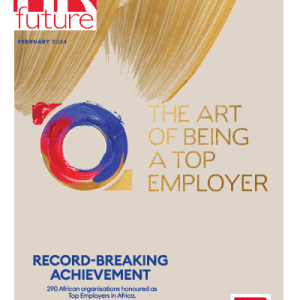No-one will dispute that we’re living through very tough times. With the world still in recovery mode after the pandemic, with energy and water shortages, increasing unemployment, a migration of talent out of organizations, and a global recession looming, it doesn’t look like things are going to improve soon enough.
So what kind of leadership do we need to get us through all of this and out on the other side?
The knee jerk reaction would be to call for tough leaders to get us through the tough times. But it all depends on your view of “tough”. On the one hand, there’s a good and positive side to “tough” and then there’s also a negative side to “tough”.
Clarifying these two views of “tough” will help you identify what leadership you want for your organisation.
One view of “tough” describes it as “strong enough to withstand adverse conditions or rough handling”. This view also sees “tough” as strong and determined, and able to tolerate difficulty or suffering, a view which is representative of both men and women. What’s not to like about such a leader?
Then there is another view of “tough” which reveals its darker side, and refers to a tough person as unyielding, unforgiving, unsympathetic, aggressive, violent, rough and ruthless. This mainly, but not exclusively, manifests as toxic masculinity. And many such leaders continue to exist in companies of all shapes and sizes.
This version of a tough leader is rapidly losing credibility and support as a result of the recent global developments which have had a huge impact on the mental health and wellbeing of employees.
There was a time when leaders displayed the attitude that, “You’re at work now so don’t bring your personal problems to work. Leave them at home.”
Now that might sound very plausible at first glance but any emotionally intelligent leader will realise that, if a worker has a personal worry or their mental health is not what it should be, their performance will be adversely affected. And if you want to extract the most value out of the worker, you simply HAVE to acknowledge their mental health issues and do what you can to assist and support them.
Now, if you’re one of those negatively tough leaders, you’ll be getting pretty irritated. That’s because such tough leaders see any form of compassion and empathy as weakness. In fact, many of them are quite afraid of their own feelings and live in emotional denial a lot of the time. The last thing they’re able to do, therefore, is acknowledge and resonate with the emotions of others – because they refuse to acknowledge their own feelings.
So, to answer the question as to whether we need tough leaders, I can say we absolutely do need tough leaders but, if we have an outdated view of tough, we need to have a rethink about what we consider tough to be.
As you take a look across your organisation, what kind of leaders do you see? Do you see “positive tough” leaders or “negative tough” leaders?
If you see any “positive tough” leaders, you want to hang on to and look after them. What, then, about the “negative tough” leaders? Is there any hope for them or should you just try and work them into a corner where they can’t affect anyone or work them out of the organisation?
The good news is that you need do neither. Leaders who subscribe to the “negative tough” concept of leadership can indeed be helped to change.
“Impossible!” you say.
I can completely understand that reaction but it is indeed possible. They CAN be helped to change – and I say so with confidence as I’ve helped many such leaders to change. And once they’ve made the change, many express private embarrassment at what they were before!
You know what? Those are the most effective ”tough” leaders to have – once they’ve seen the light, they can never “unsee” it so the changes come from within and are not forced on them, and they’re usually permanent.
So don’t give up on those “negative tough” leaders. Instead, give them an opportunity to become a huge asset for your company instead of allowing them to become a bigger liability.
Alan Hosking is the Publisher of HR Future magazine, www.hrfuture.net and @HRFuturemag. He is an internationally recognised authority on leadership competencies for the future and teaches experienced and younger business leaders how to lead with empathy, compassion, integrity, purpose and agility. He has been an Age Management Coach for two decades.
In 2018, he was named by US-based web site Disruptordaily.com as one of the “Top 25 Future of Work Influencers to Follow on Twitter“. In 2020, he was named one of the “Top 200 Global Power Thought Leaders to watch in 2021” by peopleHum in India. In 2022, he has been named on the Power List of the “Top 200 Biggest Voices in Leadership in 2022” by LeaderHum.














